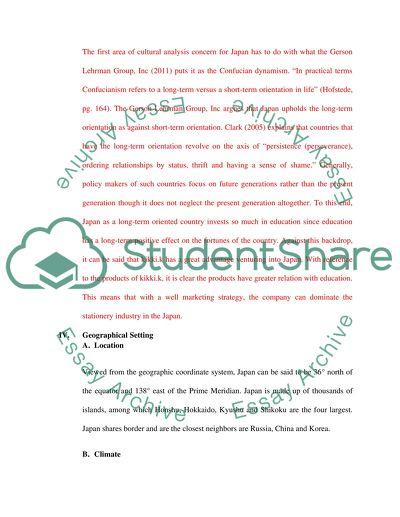Cite this document
(“Japanese cultural analysis Research Paper Example | Topics and Well Written Essays - 3000 words”, n.d.)
Retrieved from https://studentshare.org/miscellaneous/1420475-japanese-cultural-analysis
Retrieved from https://studentshare.org/miscellaneous/1420475-japanese-cultural-analysis
(Japanese Cultural Analysis Research Paper Example | Topics and Well Written Essays - 3000 Words)
https://studentshare.org/miscellaneous/1420475-japanese-cultural-analysis.
https://studentshare.org/miscellaneous/1420475-japanese-cultural-analysis.
“Japanese Cultural Analysis Research Paper Example | Topics and Well Written Essays - 3000 Words”, n.d. https://studentshare.org/miscellaneous/1420475-japanese-cultural-analysis.


